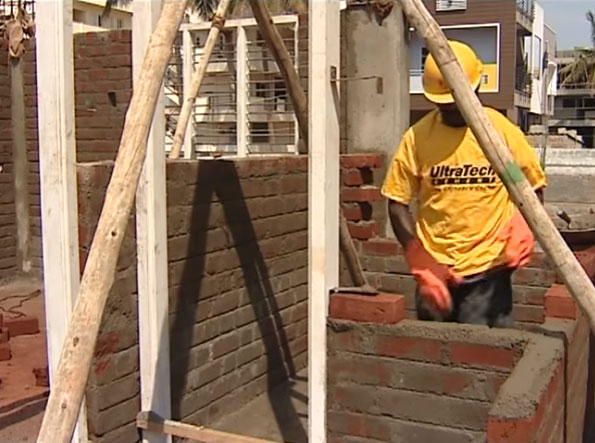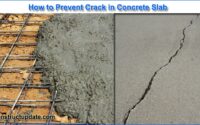Bridge Abutment Types | Bridge Abutment Components and Functions
What Is Bridge Abutment and How Does It Work?
A bridge abutment is a substructure that supports one end of a bridge’s superstructure while also laterally supporting the embankment that acts as the bridge’s approach.
A river bridge’s abutment also protects the embankment from stream scour.
Abutments for bridges can be composed of masonry or reinforced concrete.

Types of Abutments:
The most fundamental types of abutments are as under:
(a) Gravity Abutments:
Its deadweight resists horizontal earth and water pressure. The foundation of such abutments is very broad and substantial. As the name implies, the abutment’s structure is simply put on the ground, and the earth’s gravitational pull keeps the abutment in place.
(b). Gravity Abutments in the Shape of a U:
The wings of this sort of bridge abutment are perpendicular to the face and serve as counter-forts. These abutments are extremely durable. The abutment’s wing walls are at a 90-degree angle (perpendicular) to the bridge’s seat. A U-shaped Abutment consists of a pair of piles spaced equal to the width of the bridges.
Reinforced cement concrete is used to build these types of abutments. Both piles of the abutment are joined to each other at the bottom by a foundation. Both heaps have the same foot.
(c). Cantilever Wall Abutments:
A Cantilever Abutment has two functions: one is to retain soil behind the bridge’s ends, and the other is to support the superstructure of the bridge. Stub abutments are the name given to some types of wall abutments. These abutments are put at the top of fill embankments and are made as short as possible.
Stub abutments often only hold soils that are somewhat higher than the thickness of the superstructure. Stub abutments can be highly cost-effective, but they do tend to lengthen the end spans. Other wall abutments are often built to the full height of the crossing and can be much taller. Although full-height abutments are more difficult to build, they tend to have short end spans.
(d) Full Height Abutments:
A full-height abutment is one that is built at the lower level of the roadway and is designed to sustain the entire embankment. This abutment is costly, and it’s usually used in congested urban and metropolitan areas where structure depth is critical.
(e) Stub Abutments:
They are short abutments built at the top of an embankment or slope of the embankment, usually supported by piles. They are quite difficult to see from above ground level.
(f). Semi-stub Abutments:
A semi-stub abutment is in the middle of the full-height and stub-abutment heights. Unlike stub abutments, which are built at or near the top of the embankment, and full-height abutments, which are built at the bottom of the embankment, Semi-stub abutments are built halfway between the top and bottom of the embankment.
Semi-Stub Abutments are taller than stub-abutments but shorter than full-height abutments because they are taller than stub-abutments but shorter than full-height abutments.
Bridge Abutment’s Functions:
- To transfer loads from a superstructure to the components of its foundation.
- Self-weight, lateral loads (such as earth pressure), and wind loads must be resisted or transmitted.
- To support one of the approach slab’s edges.
- To keep the vertical and horizontal force aspects of an arch bridge in equilibrium.
Components of a Bridge Abutment:
Abutments are made up of numerous structural components. Abutments at either end of a bridge typically have the following five components:
- Bridge Seat
- Wing Wall
- Back Wall
- Pile Of The Abutment
- Footing Of The Abutment





